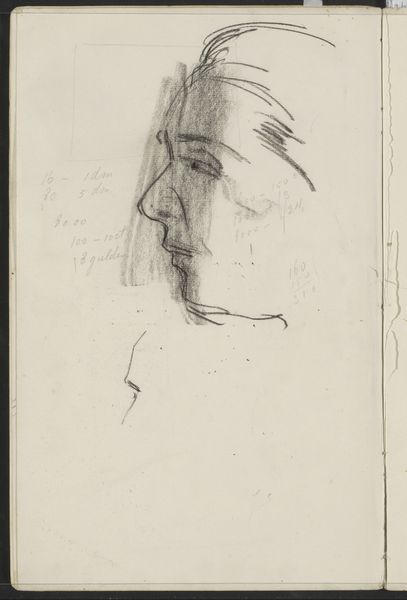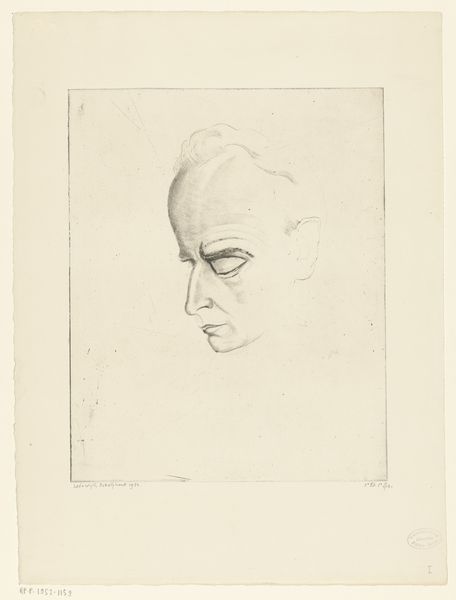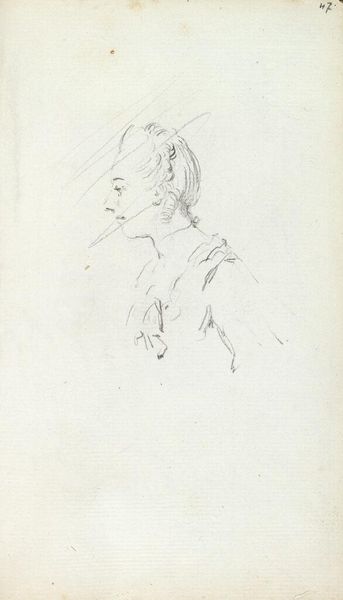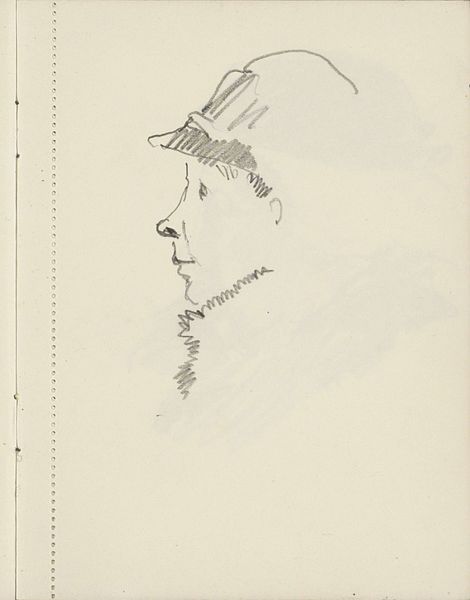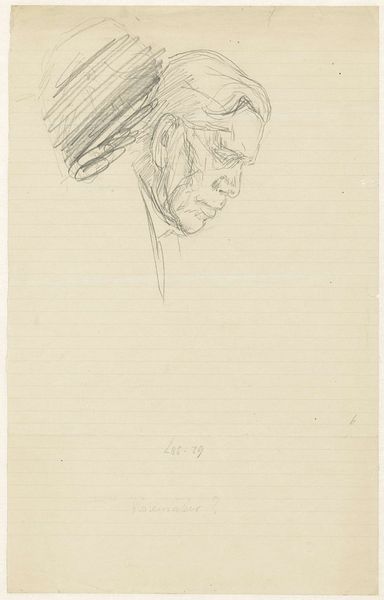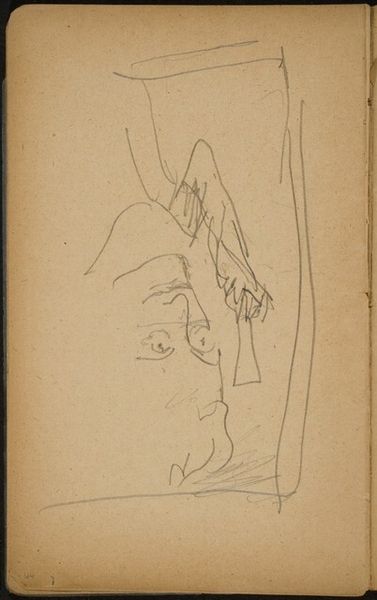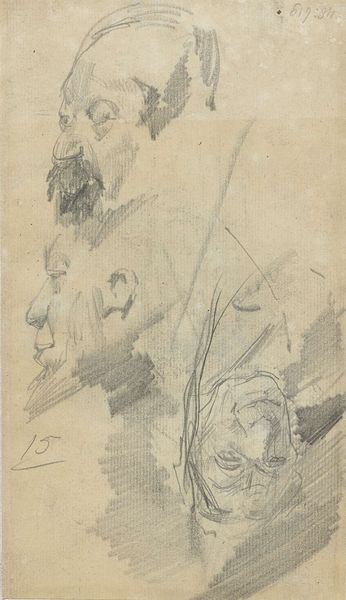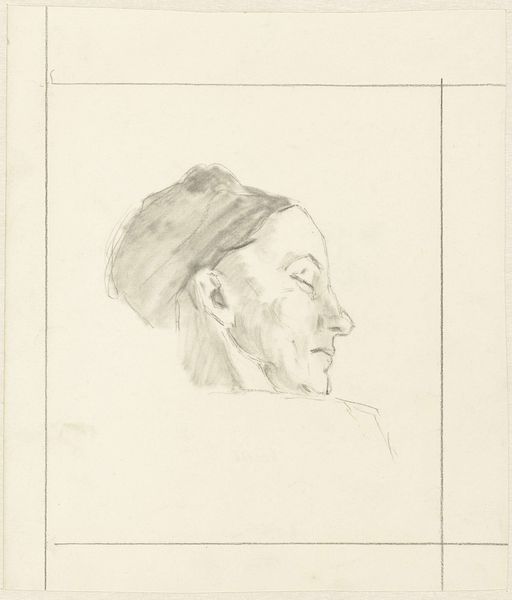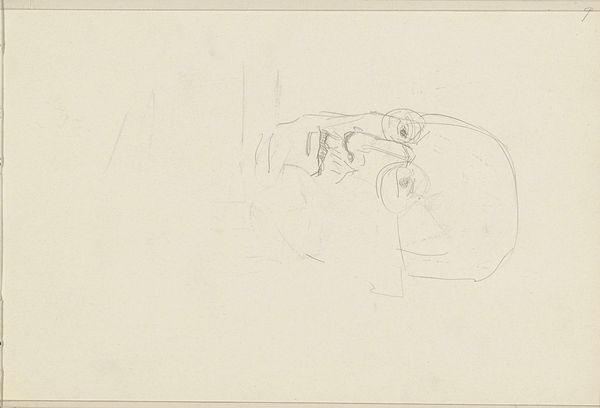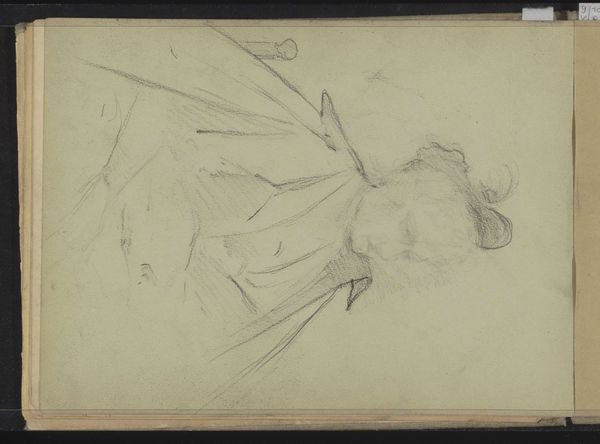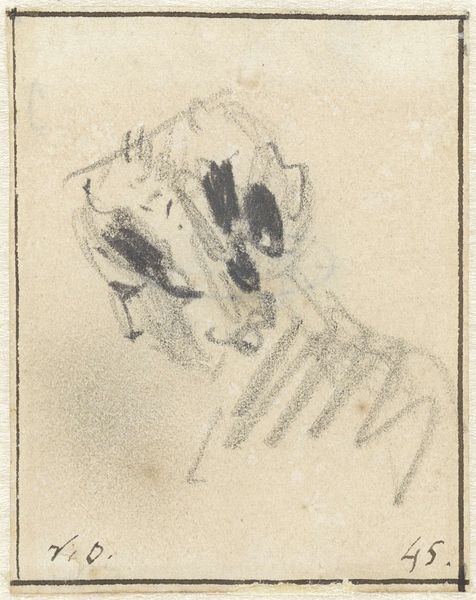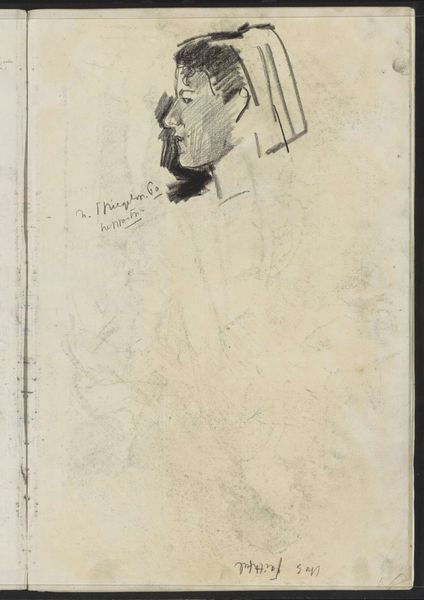
drawing, print, paper, pencil, chalk, charcoal, black-chalk
#
portrait
#
pencil drawn
#
drawing
#
baroque
# print
#
pencil sketch
#
charcoal drawing
#
paper
#
pencil drawing
#
pencil
#
chalk
#
charcoal
#
history-painting
#
black-chalk
Dimensions: 285 × 217 mm (sheet)
Copyright: Public Domain
Curator: This drawing, “Head of a Priest,” rendered after 1760 by Giovanni Battista Piazzetta, strikes me immediately with its ethereal quality. Editor: Yes, ethereal, almost spectral! It’s the gaze, isn’t it? That upward tilt of the head and eyes gives the impression that he's communing with something beyond our world. Or perhaps he is searching for something above that is lost on us? Curator: Piazzetta employed black chalk, charcoal, and pencil to build up these subtle tonal gradations. His mastery really comes across when you learn that he was a leading figure of the late Venetian Baroque, who advocated study from life, an exercise elevated by the art academies. The rendering captures both individual character, and an idealized type, right? Editor: Exactly! And consider this: at this point in the 18th century, the church still held significant political and cultural sway, particularly in Venice. A drawing like this might reflect a wider reverence or scrutiny towards religious authority, its leaders… or even be subtly subversive. But look at the composition! He's placed near the bottom of the picture, leaving the sense that he has lots of room to roam mentally. Curator: Indeed, that negative space above him gives him somewhere to put all of his attention! What I love most is how the textures play against each other—the almost velvety smoothness of his face contrasting with the rougher strokes defining his robe. It lends a sense of realism grounded within the spirituality of the character’s introspection. Editor: Right, but who exactly was he picturing here? Was it a known ecclesiastical figure? The features are particular, individualized – not just a generic priestly type. The man himself looks as if his thoughts consume his whole being. But Piazzetta worked often for publishing illustrations, in a system where the same images would appear many times in print; his images contributed heavily to shaping popular belief in his moment. Curator: Food for thought, indeed. Seeing “Head of a Priest” allows a modern audience the time to reflect both on Piazzetta’s skillful construction, but to perhaps think a bit about how their personal experience informs the idea of piety, spirituality and devotion that are on display. Editor: Absolutely. "Head of a Priest" presents an intersection of the man, and of the moment and the market, when these images took their own political trajectory. It opens questions still very valid today.
Comments
No comments
Be the first to comment and join the conversation on the ultimate creative platform.
